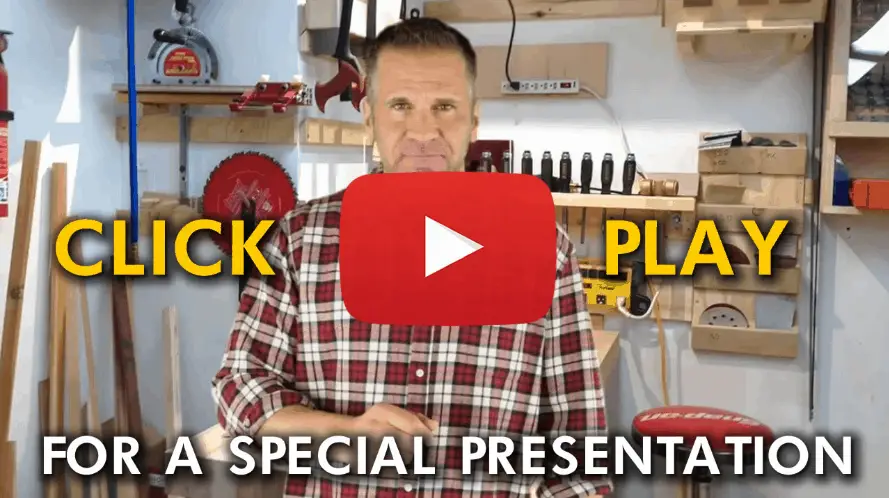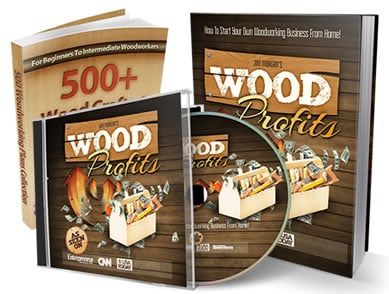Subscribe to 731 Woodworks on Youtube
Matt shows you three different ways to make drawers for your next woodworking project. He’ll show you the easiest drawers to make followed by a better drawer. Finally he will show you how to make a strong and beautiful drawer.
He’ll also show you how to install drawer slides and the false drawer fronts. Finally, he’ll show you a woodworking trick to install a drawer pull in the center every time. This is a great guide for a beginner woodworker to make drawers.
Want To Improve Your Woodworking?
Discover 1,000 Hours Of Step-By-Step Woodworking Videos

It’s called Woodwork101. A database of detailed videos and blueprints in crystal clear, mouth-watering HD that will take you by the hand and show you that DIY home projects done the right way are easy, fun, and always of top quality… turning dream into reality in a heart-beat. Getting you that perfect build each and every time.
To start, Matt specifies the desired dimensions for the drawer: 15 1/2 inches deep by 16 5/8 inches wide. He proceeds to cut the pieces to the exact length using a table saw and a miter saw. After cutting all the parts, he creates a 1/4 inch dado groove in the bottom of the drawer and tests the fit with a piece of 1/4 inch plywood. Once satisfied, he repeats this process for all the drawers.
Next, Matt assembles the drawers by applying glue to the dado groove and the end where the butt joints will connect. He compares it to solving a puzzle and emphasizes the importance of using ample glue for strength. He also notes that the back piece is slightly shorter to rest on top of the plywood. To hold everything in place, he uses brad nails while the glue dries.
For the back of the drawer, Matt attaches it by tacking the bottom of the drawer to the back piece. He recommends wiping off any excess glue. He demonstrates the process and provides a detailed view.
Matt then introduces a simpler method of making drawers without cutting dados. In this method, he suggests joining the butt joints with glue and using measurements to cut a piece of plywood to fit the bottom exactly. He mentions that 1/4 inch plywood is suitable but 1/2 inch plywood can be used for added strength.
[Video] 3 Most Common Mistakes
When Setting Up Shop

A woodworking friend of mine shared this video by Ralph Chapman with me that helped him set up his workshop.
The video explains the benefits of Ralph Chapman’s guide about setting up an affordable workshop and avoiding the most common mistakes offers to anyone interested in woodworking.
Moving on, Matt explains the process for creating the best-looking and strongest drawers using the “quarter, quarter, quarter” method. He clarifies that it involves taking the thickness of the material and dividing it in half. He sets up his tools accordingly and makes the necessary cuts on the side pieces and a rabbit on each end of the second piece. He then cuts a 1/4 inch dado across the bottom of every piece. The puzzle-like assembly requires generous glue application, and he uses brad nails or clamps for stability.
Regarding drawer installation, Matt advises placing the long pieces on the sides and the short pieces on the front and back. This configuration ensures that pulling the drawer does not stress the fasteners. He proceeds to explain the better method, which involves using a pocket hole jig and cutting dados with a table saw blade or dado stack. He demonstrates the process and highlights the importance of avoiding interference between the pocket holes and dados.
To install the drawers, Matt showcases the use of drawer slides, providing specific measurements for proper positioning. He demonstrates how to attach the slides and adjust them for the desired inset and reveal. He then shows how to install the drawers by aligning them properly and securing them with screws.
Lastly, Matt explains the process of adding drawer fronts to the false front drawers. He recommends using Ambrosia Maple or any preferred wood. He cuts the drawer front slightly shorter than the actual dimensions to achieve a reveal. Using shims, he ensures the drawer front doesn’t hit the apron when opened. He attaches the front using CA glue and activator, allowing it to dry before adding screws.
To maintain consistency in handle placement for multiple drawers, Matt shares a technique using painters tape and marking the hole locations. He guides the reader through the process, demonstrating how to drill the holes accurately. He suggests using a screwdriver to tighten the screws to avoid overtightening and damaging the drawer front.
[Guide] How To Launch Your Woodworking Business For Under $1000
Click Here To View
If you’re considering turning your woodworking hobby into a part-time business check out this helpful guide on how to get started.





